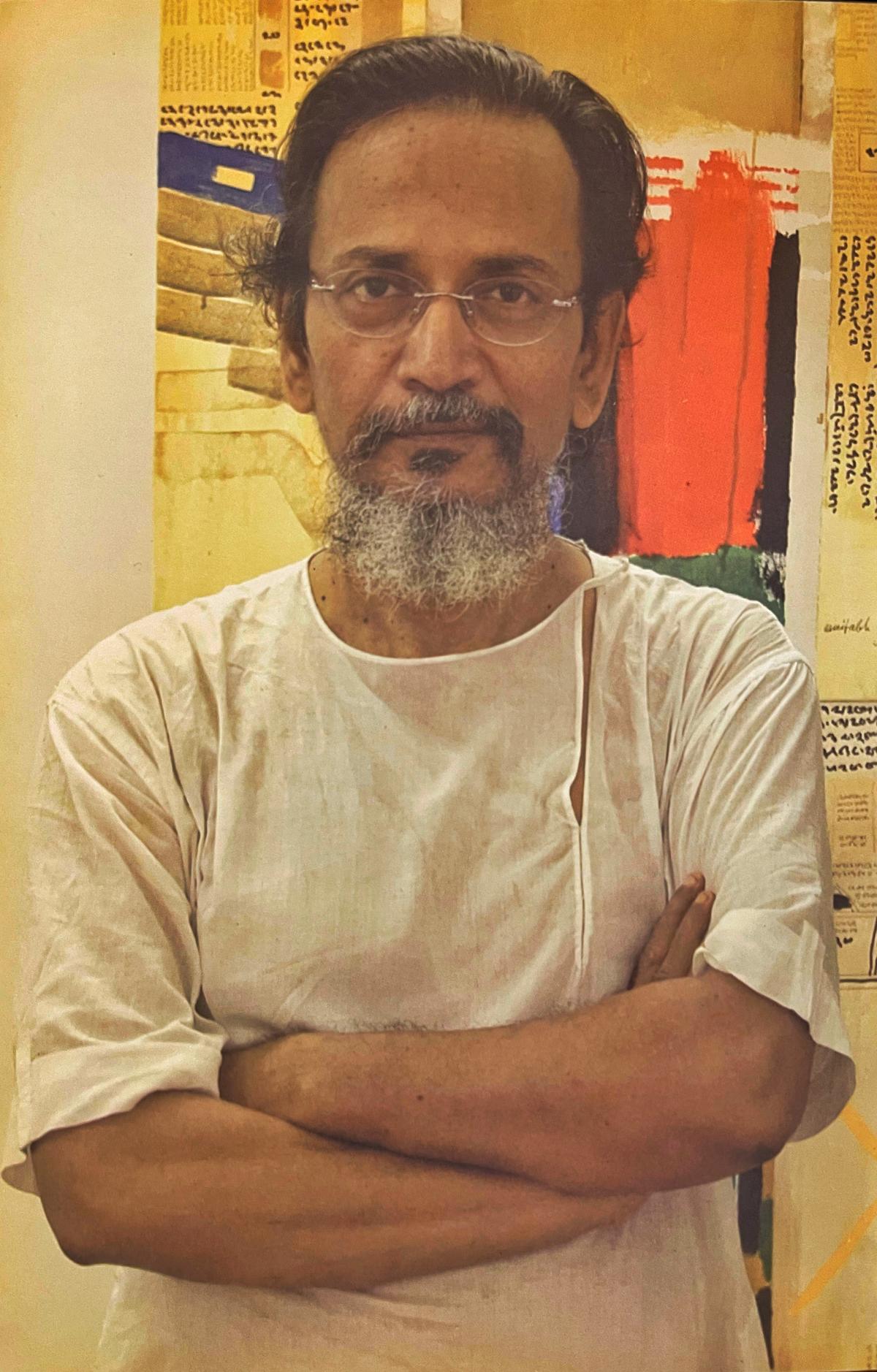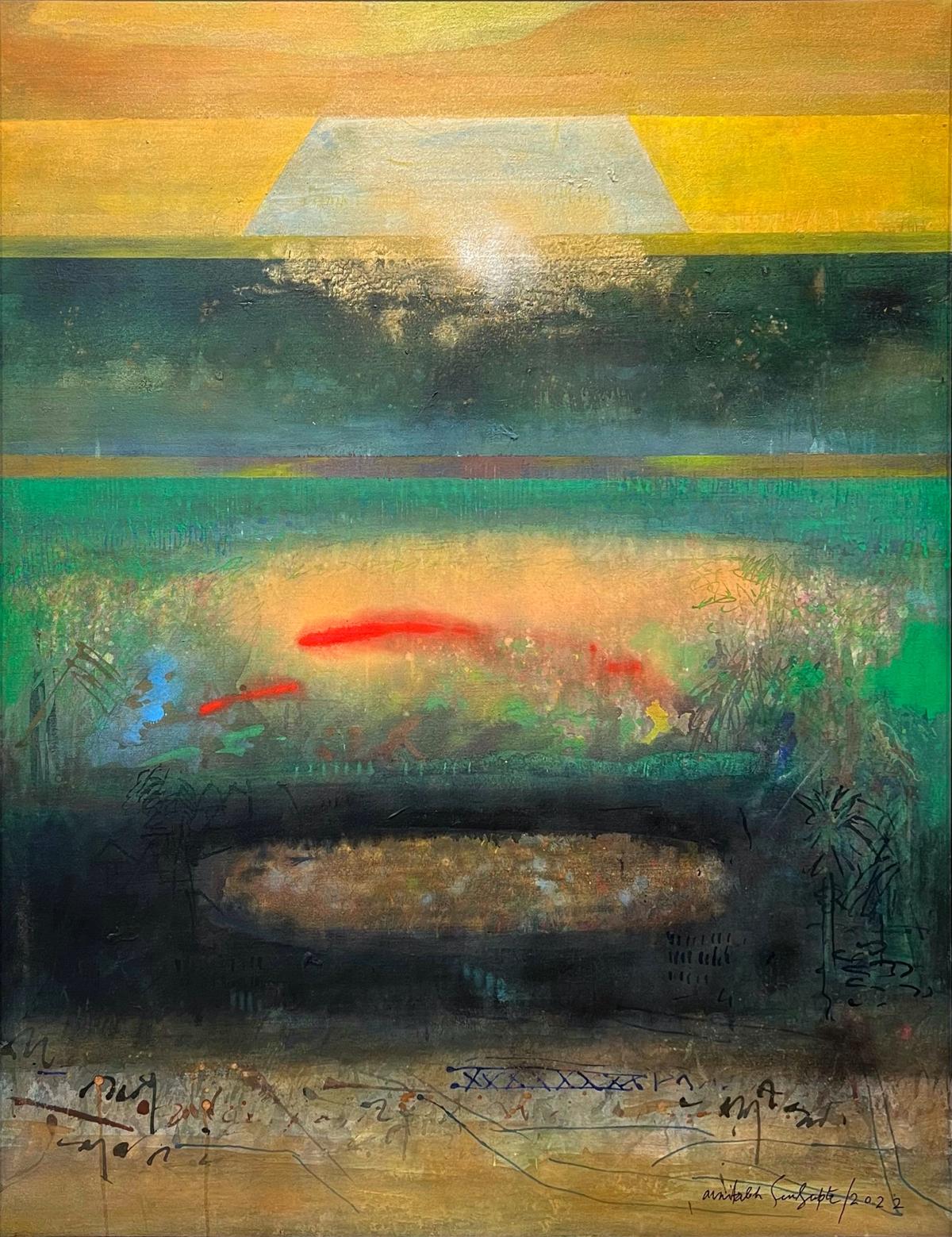[ad_1]
Swathes of green and a peculiar script beckon you at Shared Echoes, and the longer you gaze on those fonts, the more certain you are of having seen them before. Familiar, and yet new, the raw and primal hand seems to be a cross between hieroglyphics, calligraphy and runes off an ancient manuscript.
Shared Echoes, an exhibition by Amitabh Sengupta, display his art works from the Forest and Inscription series. A closer look at his canvases, especially in the Inscription series, reveal far more than what first meets the eye. The Forest series serves as a startling reminder of a world where the green cover is rapidly diminishing.
Life and culture
Amitabh says he did not have a permanent address for the longest time, travelling outside the country to study in Paris and later on to Nigeria where he worked for 11 years, following which he moved to the United States for higher studies. “This experiential side of my life and the constant moving about is reflected in my art. The people, culture and landscapes — rainforests, arid deserts and cosmopolitan cities — all served to inspire me.”
“Cultures and languages are different, and people respond differently. These experiences and realities have manifested in the themes, colours and my style over the years,” says the 84-year-old artist.

Amitabh Sengupta
| Photo Credit:
Special Arrangement
While almost each of his travels has inspired a series, Amitabh says the one constant has been the appearance of syllabary. “The Inscription series seems to be the longest running, and it merges with almost all my other series now,” he says.
The artist delves deep into the permanence and enduring resilience of the written word. “A city’s walls are mirror of its life with social and political slogans, protests and cinema posters, reflecting its nature. And while, every city has its own pattern of life, these are revealed through the writings in public places.”
He goes on to explain how he noticed inscriptions on historic artefacts. “They were not always religious in nature. Sometimes it would be a dedication to a ruler or the selfless act of a citizen. Those walls would have broken and the stones crumbled, but what they communicated still remained despite the passage of time. That intrigued me far more than the information those fragments offered.”
Amitabh shares how he came across a book on the history of scripts around that time. “Cave art was man’s way of communicating. It was not about creating or capturing beauty, but a wish to say something; those symbolic early paintings or scratches, were the beginning of a script.”

From Shared Echoes by Amitabh Sengupta
| Photo Credit:
Special Arrangement
Art and script
Having said that, Amitabh went on to explain how art and script serve a parallel purpose. According to him, as scripts evolved, words were formed, creating sentences and meaning. “In this way, man’s expressions which were initially verbal, became silent and by merit of being written, gained depth and extended through time and space.”
He adds how some ancient inscriptions still hold mankind in their thrall, especially the Indus script which remains undeciphered. “This line of thought excited me no end and I began studying various scripts such as Pali, Brahmi and Chinese as well as symbolism in other cultures.”
“Each script is beautiful, complex and complete in itself. You can put it on a pedestal or frame it. Not just phrases or a word; each basic character is a complete aesthetic form.”
Scripts and the man
It is not surprising then, that Amitabh crafted his own script, the characters of which are seen in the Inscription series.
He says sometime in the ‘90s he used a few characters from the Brahmi script on one of his canvases. “I used bold hues of brass and black, and though it was an alphabet, to me, it was a form — much like a tree or the human figure. That got me started on the idea of creating my own script,” says the artist.
“Eventually, they became a symbolic abstract with colours, lines and textures. As they are a creation of my own making, they have no historical reference and are not meant to be read or understood. They are abstract, universal and timeless.”

From Shared Echoes by Amitabh Sengupta
| Photo Credit:
Special Arrangement
His fascination seems boundless, which is remarkable given his age. He continues, “Even today, how we interpret script has evolved, how we write has changed. Apart from the invention of the press and printing technology, different forms, styles and fonts are constantly developing,” he says, adding that his characters are a symbolic form of script.
NGMA
Apart from the show at Gallery Time and Space, a retrospective on Amitabh is ongoing at the National Gallery of Modern Art (NGMA) in the city.
“There are around 134 works of mine on display at NGMA — from my early student days in Paris, to the Delhi and Nigerian periods, as well as those from the later Indian periods,” he says, adding that it spans his entire oeuvre.
“A few of my sculptures are also being shown at the retrospective, which gives one an idea of the styles, techniques and media I have employed over the years. One can get an idea of my disposition from my works at the show.”
Shared Echoes will be on at Gallery Time and Space till May 18, 2025. Entry free. Mondays closed.
Published – May 12, 2025 10:21 am IST
[ad_2]
Source link


